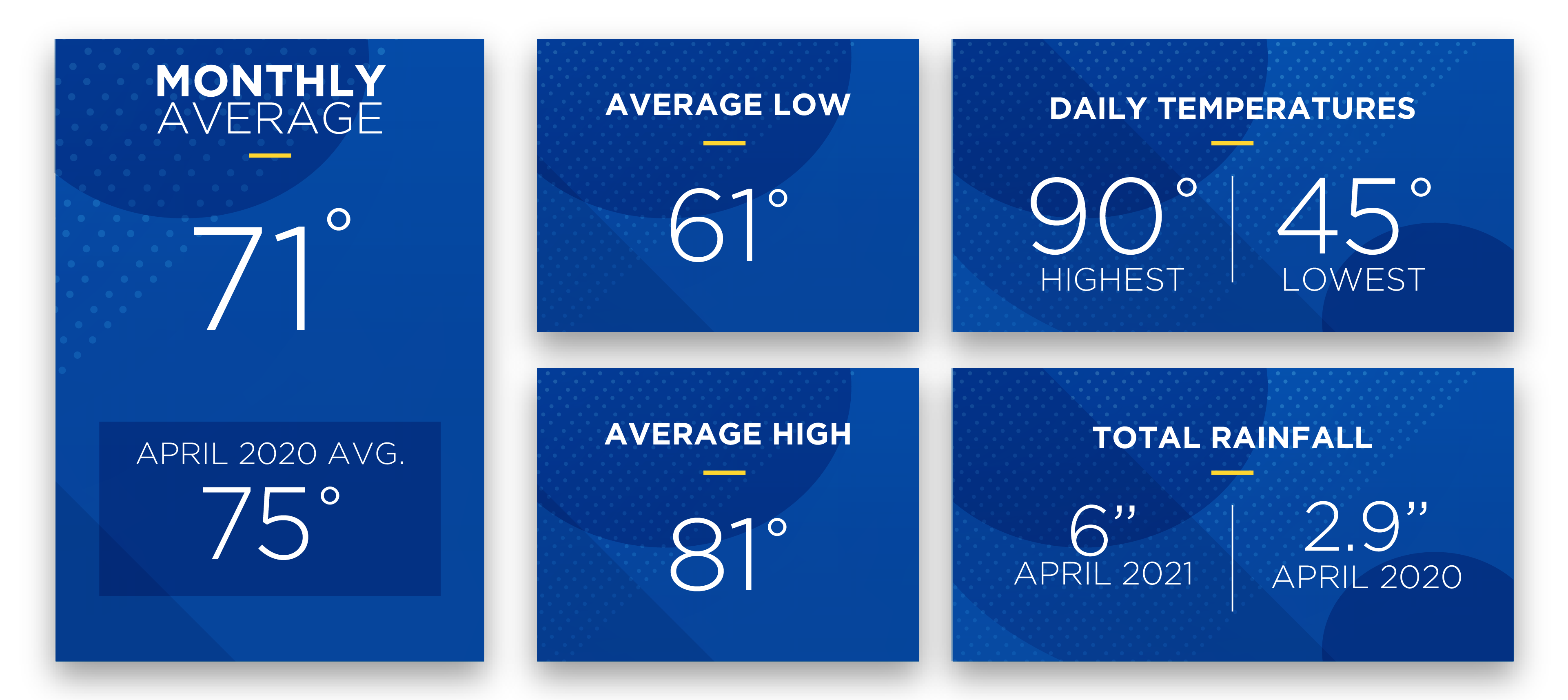April 2021 Sunshine State Stats
Will the adage prove true? Let’s hope the above average April 2021 showers will bring May flowers. April 2021 brought both rain and hot temperatures to Central Florida. Temperatures reached as high as 90 degrees and as low as 45 degrees. The month ended with an eight-day streak of high temperatures that reached over 80 degrees. In total, 21 days in the month reached above 80 degrees and 2 of these days the temperature reached 90.
Hotter temperatures are just over the horizon. Members may notice an increase in their April electric usage due to cooling needs increasing to combat hotter daily and nightly temps.
For April 2021 the average temperature was a comfortable 71 degrees, which is 4 degrees lower than the average temperature in April 2020. The highest recorded temperature was 90 degrees and the lowest recorded was 45 degrees. The average high temperature was 81 degrees, and the average low temperature was 61.
Average April rainfall is 2.8 inches, April 2021 was much higher at 6.08 inches. Comparatively, precipitation in April 2020 was lower at 2.92 which is closer to the normal average.
Again, members may see an increase in their energy usage for April 2021. Central Florida is entering into the late spring and summer months. Hotter temperatures mean HVACs will run for longer periods of time to keep the temperatures cool inside. Daily temperature fluctuations also increase HVAC usage. The highest daily temperature fluctuation in April was 28 degrees.
May forecast:
The forecast for May 2021 includes mostly sunny days with intermittent chances of daily thunderstorms. Expect highs in the 90s with lows in the high 60s to low 70s.
To check historical usage, log into SmartHub to view past bills and consumption charts. If your usage is high, SECO offers several energy-efficiency tools to help you identify energy wasters. Take the Home Energy Assessment to receive a detailed email tailored to your home’s features and lifestyle. The energy-saving advice will provide low-cost ways to decrease your usage – and your electric bill.
To easily calculate how much energy your appliances, lighting, electronic devices, and other energy-using items in your home consume, use the Energy Estimator.







